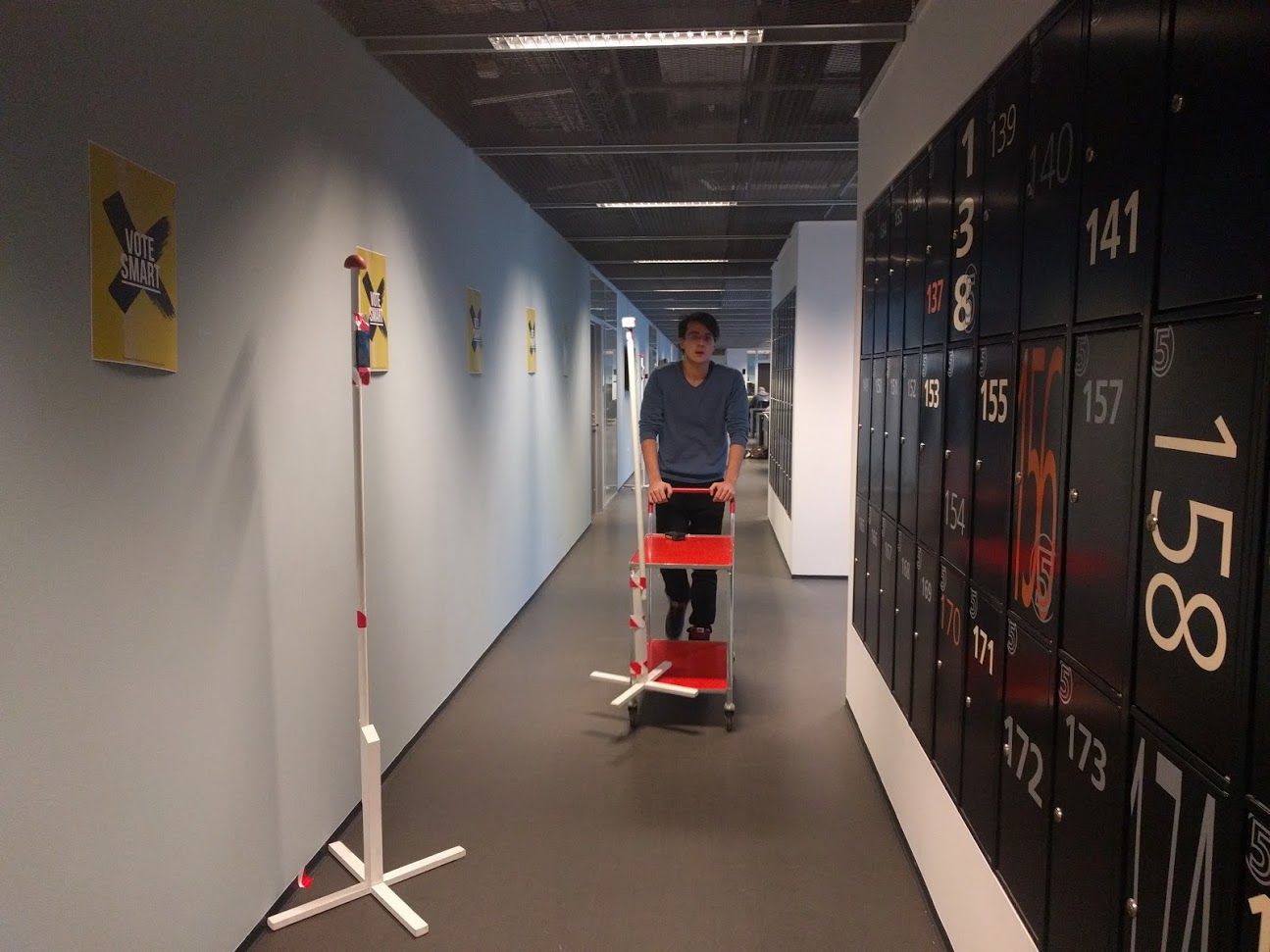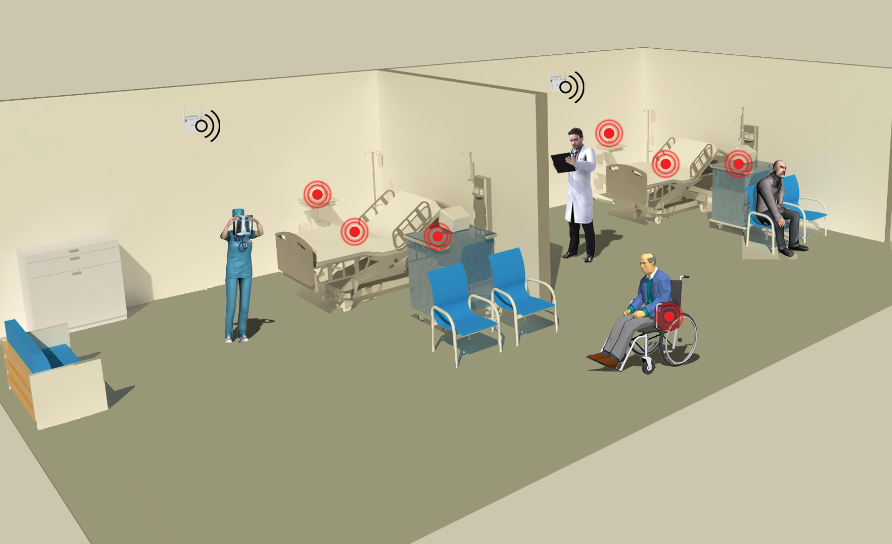Conclusion
We conclude there is a gap between a few of the mentioned research papers and the commercial products. Most researches are missing the practical usage of iBeacons and focus primarily on specific problems. However, all commercial solutions does not offer free-of-cost solutions. We think there is a place for Open Source standard software for indoor localizing System. We therefore aim to focus on practical usage of iBeacons based on Indoor Localization System and in short term share our knowledge from this thesis with potential contributors. We would like to continue working on this project and improve it. All this we aim to release it at some point as an Open Source Indoor Localization System standard software and make it possible to use the system as crowdsensing. That means people who has smartphones with the proper application and thereby be able to collect the location of the smartphone and as well as trackable objects location information periodically. This should be send to a centralized backend infrastructure based on end-user behavior and requirement.
The work from Bulten [1], Radboud University in Holland has been a major inspiration for our thesis. Bulten focuses on practical usage of the iBeacons and has already released source code based on JavaScript.
We think the combination of iBeacons’ price together with long life battery and easy-to-deploy makes it a perfect choice to use for indoor localization purpose.
Another aspect for future research would be the improvement of the algorithm’s efficiency, and overall improvement of the system as mentioned in discussion.
Finally, it should be concluded that the environment surrounding iBeacons and smartphone hardware type and model have a major impact in the final quality of the results regardless the technique.
Extra stuff
 IT University of Copenhagen
IT University of Copenhagen Experitment in 5th floor in ITU
Experitment in 5th floor in ITU 
 IELS longterm concept
IELS longterm concept  360 panorama from PitLab
360 panorama from PitLab IELS infographic
IELS infographic
Bibliography
[1] Wouter Bulten. Human slam simultaneous localisation and configuration (slac) of indoor wireless sensor networks and their user, 2015.
[2] Song Chai, Renbo An, and Zhengzhong Du. An indoor positioning algorithm using bluetooth low energy RSSI.
[3] Yu-Chung Cheng, Yatin Chawathe, Anthony LaMarca, and John Krumm. Accu- racy characterization for metropolitan-scale wi-fi localization.
[4] Ramsey Faragher and Robert Harle. An analysis of the accuracy of bluetooth low energy for indoor positioning applications. In Proceedings of the 27th Inter- national Technical Meeting of the Satellite Division of the Institute of Navigation (ION GNSS+ 2014), Tampa Florida, September 2014, pp. 2011-210., 2014.
[5] Atul Gosai and Rushi Raval. Real time location based tracking using wifi signals.
[6] Xiaofan Jiang, Chieh-Jan Mike Liang, Kaifei Chen, Ben Zhang, Jeff Hsu, Jie Liu, Bin Cao, and Feng Zhao. Design and evaluation of a wireless magnetic-based proximity detection platform for indoor applications.
[7] Philippe Bonne Jonathan Fürst, Kaifei Chen. Evaluating and improving blue- tooth low energy performance in the wild.
[8] John Krumm. Ubiquitous Computing Fundamentals. CRC Press, 2010.
[9] Anthony LaMarca and Eyal de Lara. Location systems: An introduction to the technology behind location awareness. Synthesis Lectures on Mobile and Per- vasive Computing, 3(1):1–122, 2008.
[10] Jea-Gu Lee, Byung-Kwan Kim, Sung-Bong Jang, Seung-Ho Yeon, and Young Woong Ko. Accuracy enhancement of rssi-based distance estimation by applying gaussian filter. Indian Journal of Science and Technology, 9(20), 2016.
[11] Zhouchi Li, Yang Yang, and Kaveh Pahlavan. Using iBeacon for newborns lo- calization in hospitals. In 2016 10th International Symposium on Medical In- formation and Communication Technology (ISMICT). IEEE, 2016.
[12] Filip Mazan and Alena Kovarova. A study of devising neural network based indoor localization using beacons: First results. In CISJ Vol19 No1 2015., 2015.
[13] V. N. Padmanabhan P. Bahl. Radar: An in-building rf-based user location and tracking system. In INFOCOM 2000. Nineteenth Annual Joint Conference of the IEEE Computer and Communications Societies. Proceedings. IEEE, vol. 2, pp. 775-784., 2000.
[14] Jeongyeup Paek, JeongGil Ko, and Hyungsik Shin. A measurement study of BLE iBeacon and geometric adjustment scheme for indoor location-based mobile applications. Mobile Information Systems, 2016:1–13, 2016.
[15] Piotr Sapiezynski, Arkadiusz Stopczynski, Radu Gatej, and Sune Lehmann. Tracking human mobility using WiFi signals. Tracking Human Mobility Using WiFi Signals, 10(7):e0130824, 2015.
[16] Takahiro Uchiya Ichi Takumi Shinsuke Kajioka, Tomoya Mori and Hiroshi Mat- suo. Experiment of indoor position presumption based on rssi of bluetooth le beacon. In IEEE 3rd Global Conference on Consumer Electronics (GCCE) 2014, 7-10 Oct. 2014., 2014.
[17] H. Jiang Z. Chen, Q. Zhu and Y. C. Soh. Indoor localization using smartphone sensors and ibeacons. In IEEE 10th Conference on Industrial Electronics and Applications (ICIEA), Auckland, 2015, pp. 1723-1728., 2015.
[18] Faheem Zafari and Ioannis Papapanagiotou. Enhancing iBeacon based micro- location with particle filtering.
[19] Luo Haiyong Zhu Jianyong, Chen Zili and Li Zhaohui. Rssi based bluetooth low energy indoor positioning. In IEEE 2014 International Conference for Indoor Positioning and Indoor Navigation (IPIN), 2014.

